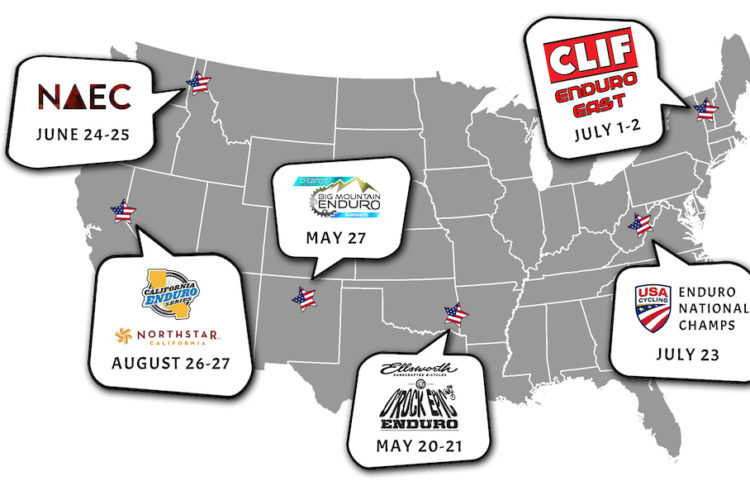Editor’s Note: “Over a Beer” is a regular column written by Greg Heil. While Greg is the Editor in Chief for Singletracks.com, any opinions expressed in this column are his alone and do not necessarily represent the opinions of Singletracks.com.
Jeff recently started a forum thread that’s generated an excellent discussion, with the question: “What is enduro?” This thread is filled with excellent arguments back and forth, and I wanted to flesh mine out a bit more.
If you read through that thread or any number of enduro-related discussions online, if you look closely enough you can spot a disconnect in the discussion, where people are talking past each other. Many people argue that the term “enduro” should only, and can only refer to certain types of things (ex. racing), while other people point out that the term “enduro” is being used by mountain bikers to describe all sorts of things, from gear to riding style, and even trails.
I’m about to go all English nerd here, so bear with me.

Descriptive VS Prescriptive
A meta-level controversy is causing this disconnect as we try to suss out what “enduro” actually means. That overarching debate is whether language and grammar are descriptive or prescriptive. Think about the dictionary that you use, and the grammar books you studied in school. What is their role? Is it to say, “here are the definitions and rules you have to use,” or to show you, “this is how this word and these punctuation marks are most often used in the world today”?
Here’s my brief take away from my college grammar classes and the BA in English that I somehow managed to acquire: looking at word definitions and grammar as a prescriptive way to smack people down and tell them they’re wrong is basically, in itself, wrong. Language, usage, grammar, punctuation–these things are in a constant state of flux. The best we can do is attempt to describe how the word is currently being used by the majority of people in the world today.
Granted, there’s still a debate raging about how much prescription should take place in grammar classes and dictionaries, so these things aren’t set in stone. But if you look at the evolution of language over the eons, it’s pretty difficult to argue that prescription is a viable way to proceed. Try reading ancient manuscripts in the original English–the further back you go, the more difficult it becomes until it’s actually impossible. The truly ancient English writings were written in what we now call “Old English,” or by another term, “Anglo-Saxon.” Old English is so far removed from Modern English that it’s considered to be a different language entirely! Yet over the centuries, the English language has slowly morphed into the words and the constructions that we use to communicate verbally and in writing today.
“Enduro”

The problem with the term “enduro” is that it’s a word in a state of flux. While at one point the term may have been used solely to refer to a race format, in 2017 the mountain bike industry and the mountain biking subculture at large are using it to refer to a race format, a type of gear, a riding style, and even perhaps a type of trail.
While “enduro” may have meant one thing 10 years ago, it means something totally different today.
Personally, I don’t have a judgement to pass on how I think the term should be used. Instead, as the usage in the MTB culture at large changes, I’m personally changing my own usage to reflect the common tongue, if you will. This approach is predicated upon my general stance in the prescriptive vs. descriptive controversy–I fall pretty hard on the descriptive side.
In my opinion, in MTB culture at large “enduro” is taking on the same meanings across the board that we used to use the term “all-mountain” for. And I’m totally OK with phasing out the term “all-mountain” — it was awkward at best, and a pain in to write and speak at worst. “Enduro” flows off the tongue much more freely, and I’m all for verbal economy.
OK, Maybe I’ll Get a Little Prescriptive…

If there’s one thing that annoys me to no end, it’s seeing the world “enduro” capitalized. If you’re sticking to capitalization rules that follow common usage, the only reason “enduro” should contain a capital “E” is if it’s being used as a proper noun (or in an article title, or some other place where capitalization is required). If you’re referring to the Specialized Enduro or the Enduro World Series, then fine–capitalize away. But if you’re referring to an enduro race, an enduro bike, an enduro helmet, or the fact that you participated in an enduro, all of those general usages should be lowercased.
You could turn around and argue that you’re kicking common usage to the curb and have decided to make your own rules, in an attempt to impact the future of the English language, and your argument would be totally valid… as long as you’re not submitting an article to a publication or are producing marketing copy for a company or event. As descriptive as I may prefer to be when it comes to language and grammar, knowing and adhering to the rules of common usage does have value, because those rules allow us to communicate with one another clearly and without confusion.
So please, feel free to grab your enduro bike and head out for an enduro ride. Just make sure you don’t capitalize it.




















